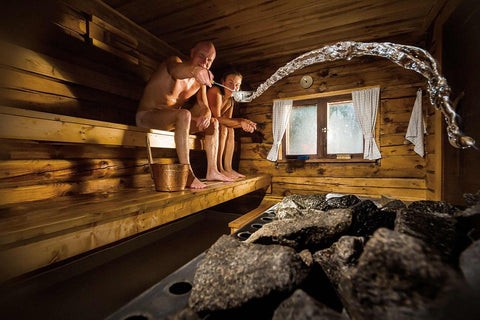Indicators on Traditional Sauna You Should Know
Indicators on Traditional Sauna You Should Know
Blog Article
Unknown Facts About Traditional Sauna
Table of ContentsExamine This Report on Traditional SaunaEverything about Traditional SaunaSome Of Traditional SaunaAll About Traditional SaunaSome Known Questions About Traditional Sauna.
The majority of the weight lost in a sauna is water loss and is re-gained upon rehydrating. Without an uncertainty sauna can be an important part of a healthy weight loss program. To take a look at the differences between conventional and IR saunas, I will separate these into verifiable, theoretical, and fabricated differences.Thus, the hottest point in the saunawhich is at the ceiling directly over the sauna heateris normally between 185 and 190 F. Claims that a standard sauna exceeds 200 F is simply not true and not suitable for electric saunas offered in the US. The temperature for a far-infrared sauna is usually set in between 120 and 140 F; nonetheless, unlike the standard sauna, the goal in and IR room is not to achieve a high temperature.

When a conventional sauna has actually been appropriately heated, the sauna wall surfaces are warm, the air temperature level has attained set temperature level and the rocks are super warmed. As an interesting side note, the warmed walls and the rocks are emitting far-infrared warmth, combined with the warmed air, to develop an "covering warmth".
How Traditional Sauna can Save You Time, Stress, and Money.
When the high temperature is attained, the components cycle on and off to maintain the high temperature. The majority of traditional sauna individuals appreciate pouring water over the rocks to produce heavy steam to elevate sauna moisture levels. The benefits of pouring water over the rocks include: making the space extra comfy, moistening the nasal passages, and enabling the use of aromatherapy by blending vital oils with the water.

When the energy enters the body, it causes the body temperature level to Extra resources boost and eventually results in perspiration. In an infrared sauna it is very important for the emitters/heaters to remain on almost constantly. Considering that there is no mass of rocks to retain warmth, the sauna will certainly cool down if the emitters shut down.
The smart Trick of Traditional Sauna That Nobody is Talking About
As pointed out above, the sauna bather in an infrared space wants to position himself before running emitters to obtain optimal gain from the warmth. The heating time for both spaces can be really different, depending on how the spaces are utilized. For a traditional sauna, a bather needs to enable 30-40 mins for the area to attain a desired temperature level and to properly pre-heat the rocks.

A well created sauna will typically achieve a temperature level of 150-160 F in concerning 30-40 mins. For hotter temperature levels, the space may require to warmth for a longer period.
To some, 15 minutes was "squandered" while the infrared energy warmed the wood panels as opposed to warming a body, while others find a pre-heated space to be extra comfortable and believe a raised starting temperature level is essential to begin sweating. The length of advised usage for each and every area is about the very same (10-15 minutes per session); nonetheless, due to the reduced air temperatures and the ability to feel the effects of infrared warmth quicker than a conventional sauna, it is not uncommon for an individual to invest a total of 20-30 minutes in an infrared sauna.
Getting My Traditional Sauna To Work

The average expense per kWH of power in the U.S. is about $0.11, so a 4.5 kW heating system will certainly set you back around $.50 to compete one hour, if the heater runs continuously for one hour. Typically a sauna heating system will run for 75% of the very first hour and 50% of subsequent hours on because the elements cycle once the established site web temperature level is accomplished.
A 2 person far-infrared room is usually literally smaller than a conventional sauna, frequently concerning 4' x 4' or smaller. The IR heater is generally 1.5-1.7 kW utilizing a 120 volt 15 amp plug-in service. Because the area can be used faster than a sauna area, we will certainly assume the room is utilized for to of an hour consisting of warm up time.
There is a hardly ever gone over distinction in the social experience between the 2 rooms. While our society has actually lost several of the social advantage of the typical sauna experience, it can be extremely socially rewarding (Traditional Sauna). From household time in the sauna, to heart-felt discussions with better halves, to sauna partiesthe standard sauna experience can result in intimate mingling
Get This Report about Traditional Sauna
Many greater end infrared spaces include colored light therapy, audio systems and full-glass fronts.
Report this page